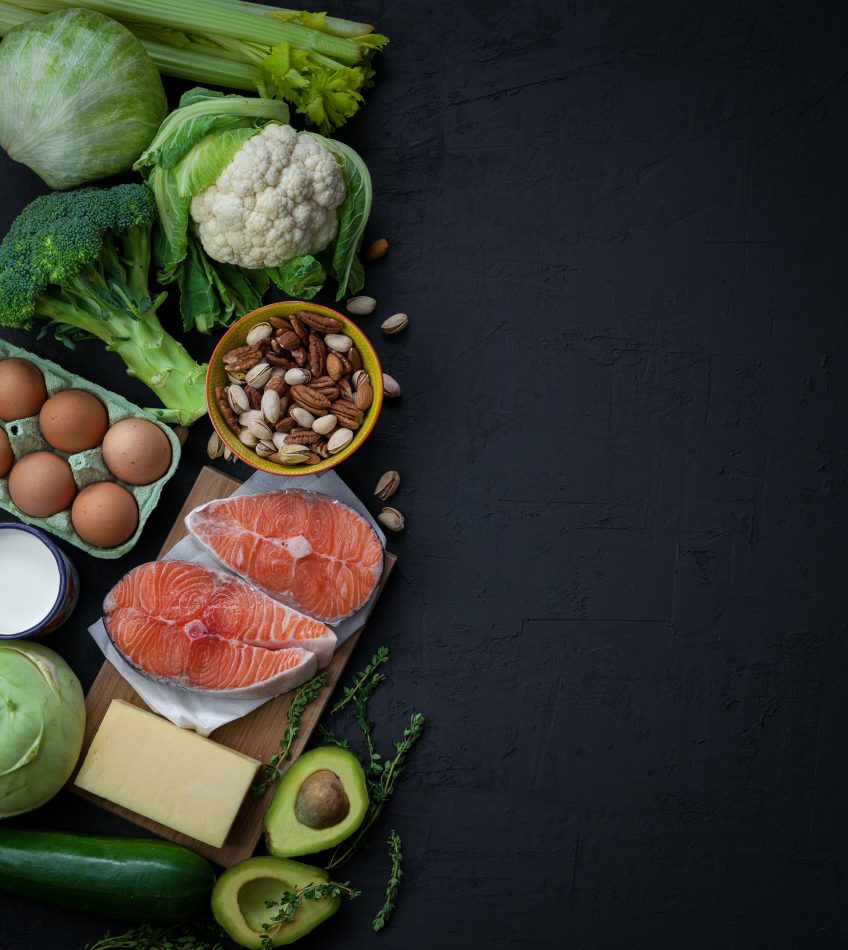
The ketogenic diet, often referred to as the keto diet, is a low-carb, high-fat eating plan that has gained immense popularity for its potential health benefits. In this comprehensive guide, we will walk you through the fundamentals of the keto diet, its various aspects, and how to get started.
What is a Ketogenic Diet?
At its core, the ketogenic diet is designed to shift your body’s primary source of energy from carbohydrates to fats. By drastically reducing carbohydrate intake and increasing fat consumption, your body enters a metabolic state known as ketosis. During ketosis, the body becomes highly efficient at burning fat for energy, producing molecules called ketones in the liver, which are used as an energy source, particularly for the brain.
Types of Ketogenic Diets
There are different variations of the ketogenic diet, including:
Standard Ketogenic Diet (SKD): This is the most common version, with a high fat, moderate protein, and very low carbohydrate ratio.
Cyclical Ketogenic Diet (CKD): Involves cycling between periods of high-carb intake and strict keto days.
Targeted Ketogenic Diet (TKD): Allows for the consumption of additional carbs around workouts.
High-Protein Ketogenic Diet: Similar to the standard keto diet but with a higher protein ratio.
For beginners, the standard ketogenic diet (SKD) is often recommended, as it has been extensively studied and is the most straightforward to follow.
Understanding Ketosis
Ketosis is the metabolic state in which your body relies on fat for fuel instead of carbohydrates. Achieving ketosis involves limiting daily carb intake to around 20-50 grams, while increasing your consumption of fats from sources like meat, fish, eggs, nuts, and healthy oils. It’s crucial to moderate protein intake, as excess protein can be converted into glucose, potentially hindering ketosis.
Practicing intermittent fasting can also expedite the transition into ketosis. Intermittent fasting typically involves restricting food intake to an 8-hour window and fasting for the remaining 16 hours of the day. Certain tests and symptoms, such as increased thirst, dry mouth, frequent urination, and reduced appetite, can indicate that you are in ketosis.
Weight Loss on the Keto Diet
One of the primary reasons people adopt the ketogenic diet is for weight loss. Research suggests that the keto diet can be as effective, if not more so, for weight loss when compared to low-fat diets. It often leads to reduced appetite, making calorie counting unnecessary.
Studies have shown that individuals on the keto diet tend to lose more weight, particularly body fat, than those on low-fat diets. Additionally, the diet can lead to improvements in blood pressure and triglyceride levels.
Ketogenic Diets for Diabetes and Prediabetes
The keto diet has shown promise in improving insulin sensitivity, making it beneficial for people with type 2 diabetes or prediabetes. It can help in weight loss, which is closely linked to diabetes management.
Research indicates that following a ketogenic diet can lead to significant reductions in hemoglobin A1C levels and better blood sugar control in individuals with type 2 diabetes. It may also reduce the need for certain diabetes medications.
Foods to Eat and Foods to Avoid
To succeed on the ketogenic diet, it’s essential to know which foods to include and which to avoid. High-fat foods like avocados, nuts, seeds, and fatty cuts of meat are staples. Conversely, you should limit or eliminate starchy carbohydrates, sugary foods, and processed items from your diet.
Sample Keto Meal Plan
Here’s a sample meal plan to give you an idea of what a day on the keto diet might look like:
Breakfast: Scrambled eggs with spinach and avocado.
Lunch: Grilled chicken breast with a side of broccoli and a salad with olive oil dressing.
Dinner: Baked salmon with asparagus and cauliflower rice.
Snacks: Almonds, cheese, or a keto-friendly protein bar.
Tips for Success
Stay hydrated by drinking plenty of water.
Monitor your carb intake diligently.
Focus on whole, unprocessed foods.
Track your macros (fat, protein, carbs) if necessary.
Be patient; it may take time for your body to fully adapt to ketosis.
Dining Out on Keto
Eating out while on the keto diet is possible with a little planning. Opt for dishes rich in protein and healthy fats, and ask for substitutions when needed. Avoid bread, pasta, and sugary beverages.
Potential Side Effects and Risks
Some individuals may experience side effects when starting the keto diet, such as the “keto flu,” which includes symptoms like fatigue and headaches. It’s essential to be aware of these potential issues and take steps to mitigate them.
Supplements
In some cases, supplements like electrolytes or fiber may be beneficial to maintain a balanced diet while on keto. Consult with a healthcare professional before adding any supplements.
Bottom Line
The ketogenic diet can be an effective tool for weight loss, improving metabolic health, and managing conditions like diabetes. However, it’s crucial to approach it with knowledge and a well-thought-out plan. Always consult with a healthcare provider before making significant dietary changes.
Remember, the keto diet may not be suitable for everyone, so it’s essential to find a dietary approach that aligns with your individual goals and health needs.